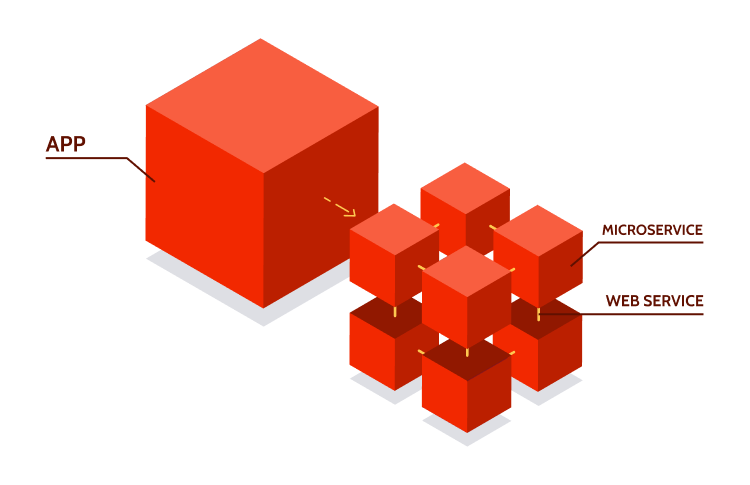What Is the Best Way to Deploy Microservice?
In the ever-evolving landscape of software development, microservices have emerged as a game-changer. They offer flexibility, scalability, and improved maintainability for applications. However, to harness their full potential, it’s crucial to understand the best way to deploy microservices. In this article, we’ll dive deep into this topic, providing expert guidance, real-world insights, and answers to frequently asked questions.
Deploying microservices effectively is a critical aspect of modern software development. It’s not just about breaking down your application into smaller components; it’s also about orchestrating and managing them seamlessly. In this guide, we’ll explore the intricacies of deploying microservices, from choosing the right architecture to optimizing for performance. Let’s embark on this journey to discover the best practices.
Microservices deployment involves multiple aspects, each contributing to the overall success of your project. Here, we’ll outline the key factors to consider when deploying microservices:
Choosing the Right Architecture
Microservices thrive in an environment where each service can operate independently. This calls for a well-thought-out architectural approach. Consider using the following architectures:
1. Monolithic vs. Microservices: A Comparative Analysis
Deciding between a monolithic and microservices architecture is the first step. We’ll explore the pros and cons of each to help you make an informed choice.
2. Containerization with Docker
Docker containers provide isolation for microservices, making deployment consistent and efficient. Learn how to leverage Docker for your projects.
3. Kubernetes Orchestration
Kubernetes simplifies the management of containerized applications. Discover how it can streamline your microservices deployment.
Ensuring Scalability
Microservices are known for their scalability, but achieving it requires careful planning. We’ll delve into strategies for scaling your microservices:
4. Horizontal vs. Vertical Scaling
Learn the differences between horizontal and vertical scaling and when to use each to meet your application’s demands.
5. Auto-Scaling Techniques
Explore auto-scaling mechanisms that adapt to changing workloads, ensuring optimal resource utilization.
Managing Data Consistency
Microservices often handle data, which poses challenges in maintaining consistency. Here’s how to handle this crucial aspect:
6. Database Choices in Microservices
Selecting the right database technology is vital. We’ll discuss options like SQL, NoSQL, and NewSQL and their suitability for microservices.
7. Event Sourcing and CQRS
Discover how event sourcing and command-query responsibility segregation (CQRS) can enhance data consistency in microservices.
Implementing Continuous Integration/Continuous Deployment (CI/CD)
Automation is key to deploying microservices rapidly and reliably. Let’s explore CI/CD practices:
8. CI/CD Pipelines for Microservices
Learn how to build efficient CI/CD pipelines that enable seamless testing and deployment of microservices.
9. Canary Deployments
Explore canary deployments, a strategy that minimizes risk during microservices updates by rolling them out gradually.
FAQs
How do I choose between a monolithic and microservices architecture?
The choice depends on your project’s requirements. Monolithic is simpler, while microservices offer flexibility. Consider your team’s expertise, scalability needs, and project complexity.
Is Docker necessary for microservices deployment?
Docker isn’t mandatory but highly recommended. It simplifies the management of microservices, ensures consistency, and streamlines scaling.
What are the advantages of using Kubernetes for microservices?
Kubernetes automates many aspects of microservices management, such as scaling and load balancing. It’s an excellent choice for orchestrating containerized applications.
How can I ensure data consistency in microservices?
Opt for a database technology that suits your data needs. Implementing event sourcing and CQRS can also help maintain data consistency.
What is the purpose of CI/CD pipelines in microservices?
CI/CD pipelines automate testing and deployment, ensuring that changes are introduced smoothly and reliably into your microservices architecture.
What are canary deployments, and how do they benefit microservices?
Canary deployments involve rolling out updates to a subset of users, allowing you to detect issues before a full release. This minimizes the impact of potential problems.
Conclusion
Deploying microservices is a complex but rewarding endeavor. By choosing the right architecture, ensuring scalability, managing data consistency, and implementing CI/CD practices, you can unlock the full potential of microservices. Remember, it’s not just about deploying them—it’s about deploying them right.





